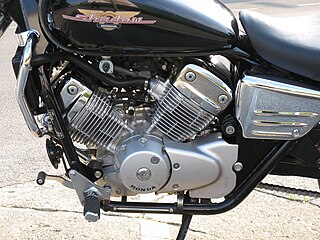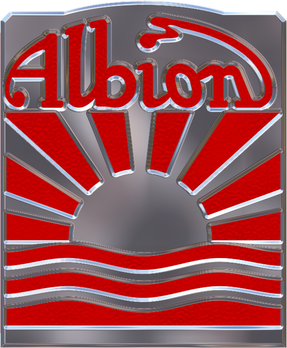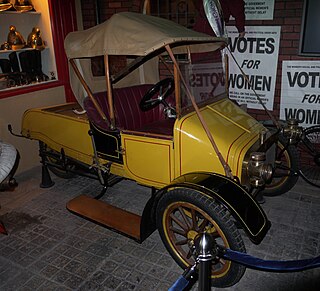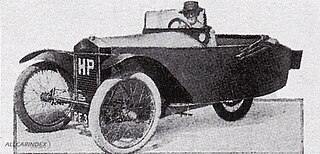
A V-twin engine, also called a V2 engine, is a two-cylinder piston engine where the cylinders are arranged in a V configuration and share a common crankshaft.
The Adamson was an English car manufactured in Enfield, Middlesex, from 1912 to 1925. It was designed by Reginald Barton Adamson at the premises of the family haulage contract business.

Tiny was a British cyclecar manufactured by Nanson, Barker & Co at Esholt, Yorkshire between 1912 and 1915.

Albion Motors was a Scottish automobile and commercial vehicle manufacturer.

Crouch Cars was a company founded by JWF Crouch in Coventry, England in 1912 which manufactured cars until 1928. It was located at first in Bishop Street moving in 1914 to Cook Street.

Fairthorpe Ltd was a British manufacturer of motorcars, active between 1954 and 1973. Production was in Chalfont St Peter, Buckinghamshire, England between 1954 and 1961, from 1961 to 1973 in Denham, Buckinghamshire.

The Woodrow was a British cyclecar manufactured in Stockport from 1913 to 1915.

Coventry Premier Limited owned a British car and cyclecar manufacturing business based in Coventry from 1912 to 1923. It changed its name from Premier Cycles to Coventry Premier Ltd in November 1914.

The GWK was a British car made in Maidenhead, Berkshire, between 1911 and 1931. It got its name from its founders, Arthur Grice, J. Talfourd Wood, and C.M. Keiller. The cars were unusual in using a friction drive system.

The GN was a British cyclecar made in London, between 1910 and 1925, The name derived from its founders, H.R. Godfrey and Archibald Frazer-Nash. Production ceased in 1923 but the company kept trading until 1925.

Douglas was a British motorcycle manufacturer from 1907 to 1957 based in Kingswood, Bristol, owned by the Douglas family, and especially known for its horizontally opposed twin cylinder engined bikes and as manufacturers of speedway machines. The company also built a range of cars between 1913 and 1922.
The Elfe was a French automobile, manufactured in Lavallois, Paris, from 1919 until about 1925 by Ateliers Defrance Freres. The company was founded by M. Eugene Mauve, who was also the instigator of the Bol d'Or race for cyclecars and latterly motorcycles, now held at the Le Mans circuit in France. During its brief life, the company entered numerous races, under various names including ELFE, Elfe-Anzani, Elfe-DeFrance and Mauve.
The Buckingham was an English automobile manufactured by the Buckingham Engineering Company in Coventry from 1914 until 1923. The company had made cars under the Chota name from 1912.
The Rover 8 was a small single-cylinder 8 hp 1327 cc car made by the British Rover car company. It was Rover's first production car. It was remarkable for being supported by a backbone chassis rather than a conventional ladder frame. The first model was manufactured from 1904 to 1912. A Daimler-Knight sleeve valve engine option was available on the original model in 1911 and 1912.
The Hampton was a British car made by the Hampton Engineering Company which was based in Kings Norton, Birmingham from 1912 to 1918 and at Dudbridge in Stroud, Gloucestershire from 1918 to 1933
The Marlborough was a make of car sold on the British market between 1906 and 1926. For most of its life the cars were made by Malicet et Blin in France, but after World War I they were partially assembled (finished) in London and an increasing number of British parts used.

The HP was a British three-wheeled cyclecar made from 1926 until 1928 by Hilton-Peacey Motors of Woking, Surrey.

The Little Midland or LM was a British 4-wheeled cyclecar made from 1910 to 1922 by the Little Midland Light Car Co Ltd in various places in Lancashire.
The Zendik was a British cyclecar designed by Harold Birdsall Bullingham (1879–1952) and made by Zendik Cars Ltd of Thames Street, Kingston upon Thames, Surrey, England in 1912 and 1913. They had a sales office and showroom run by H Jenks at Ebury Street, Eaton Square, London SW.
The Day-Leeds was a British automobile manufactured by Job Day & Sons of Leeds, Yorkshire.












